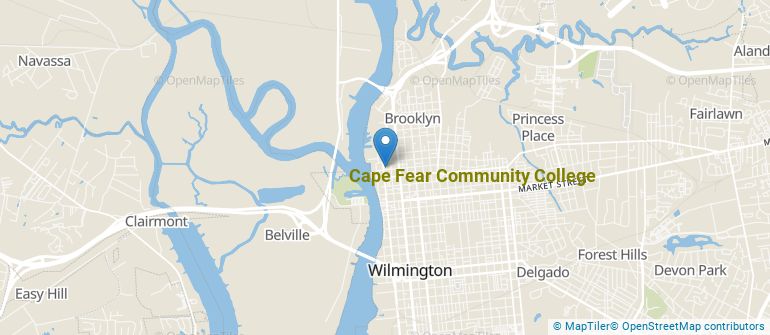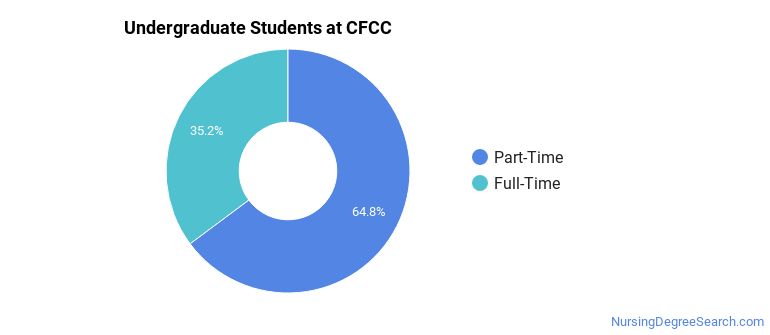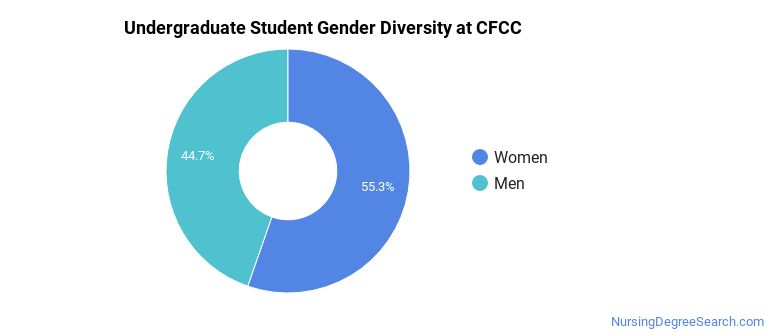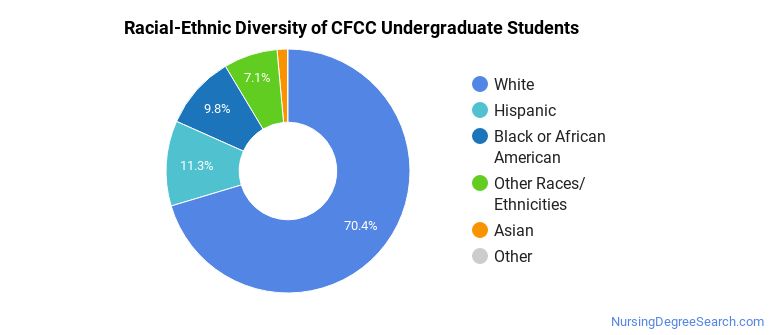Cape Fear Community College Nursing Programs
Cape Fear Community College is a public institution situated in Wilmington, North Carolina. The city atmosphere of Wilmington makes it a great place for students who enjoy having lots of educational and entertainment options.
Where Is Cape Fear Community College?

Contact details for CFCC are given below.
| Contact Details | |
|---|---|
| Address: | 411 North Front Street, Wilmington, NC 28401-3910 |
| Phone: | 910-362-7000 |
| Website: | www.cfcc.edu |
How Do I Get Into CFCC?
You can apply to CFCC online at: cfcc.edu/admissions/
Can I Afford Cape Fear Community College?
Student Loan Debt
Almost 66% of college students who graduated with the class of 2018 took out student loans, but that percentage varies from school to school. At CFCC, approximately 11% of students took out student loans averaging $9,710 a year. That adds up to $38,840 over four years for those students.
Cape Fear Community College Undergraduate Student Diversity

Gender Diversity
Of the 3,054 full-time undergraduates at CFCC, 45% are male and 55% are female.

Racial-Ethnic Diversity
The racial-ethnic breakdown of Cape Fear Community College students is as follows.

| Race/Ethnicity | Number of Grads |
|---|---|
| Asian | 42 |
| Black or African American | 298 |
| Hispanic or Latino | 345 |
| White | 2,149 |
| International Students | 2 |
| Other Races/Ethnicities | 218 |
Cape Fear Community College Nursing Concentrations
The table below shows the number of awards for each concentration.
| Major | Basic Certificate | Associate’s | Undergraduate Certificate | TOTAL |
|---|---|---|---|---|
| Registered Nursing | 0 | 69 | 0 | 69 |
| Licensed Practical/Vocational Nurse Training | 0 | 0 | 21 | 21 |
| Nursing Assistant/Aide and Patient Care Assistant/Aide | 6 | 0 | 0 | 6 |
| TOTAL | 6 | 69 | 21 | 96 |
References
*The racial-ethnic minorities count is calculated by taking the total number of students and subtracting white students, international students, and students whose race/ethnicity was unknown. This number is then divided by the total number of students at the school to obtain the racial-ethnic minorities percentage.
More about our data sources and methodologies.
